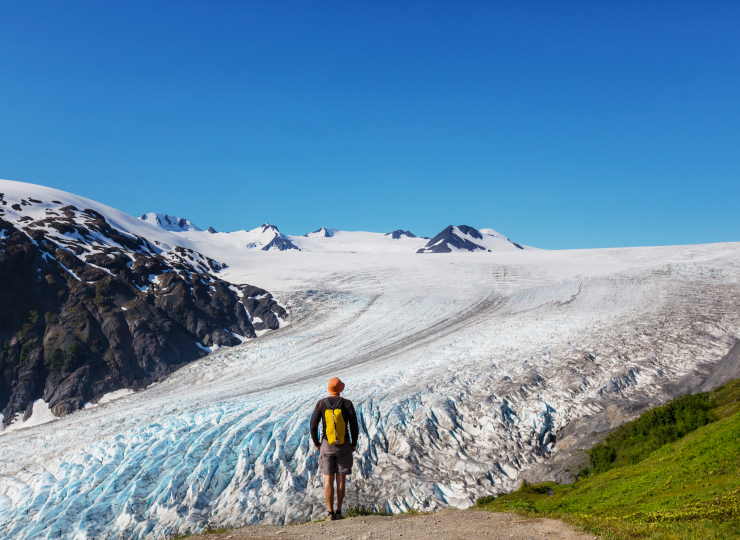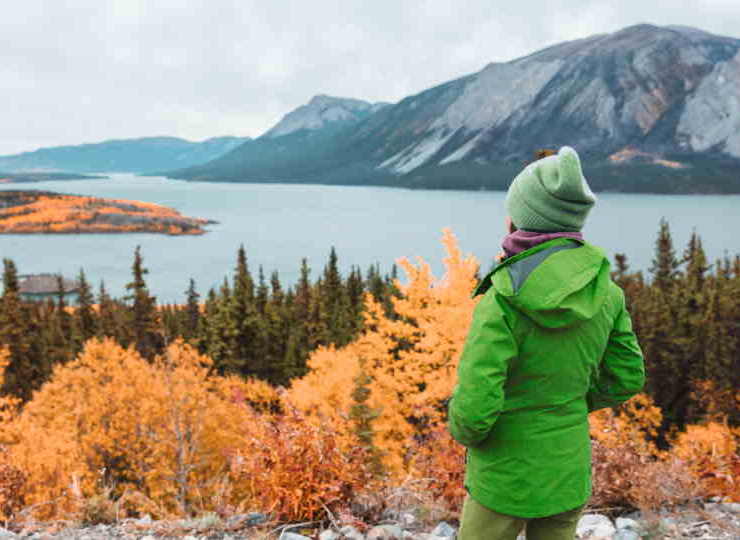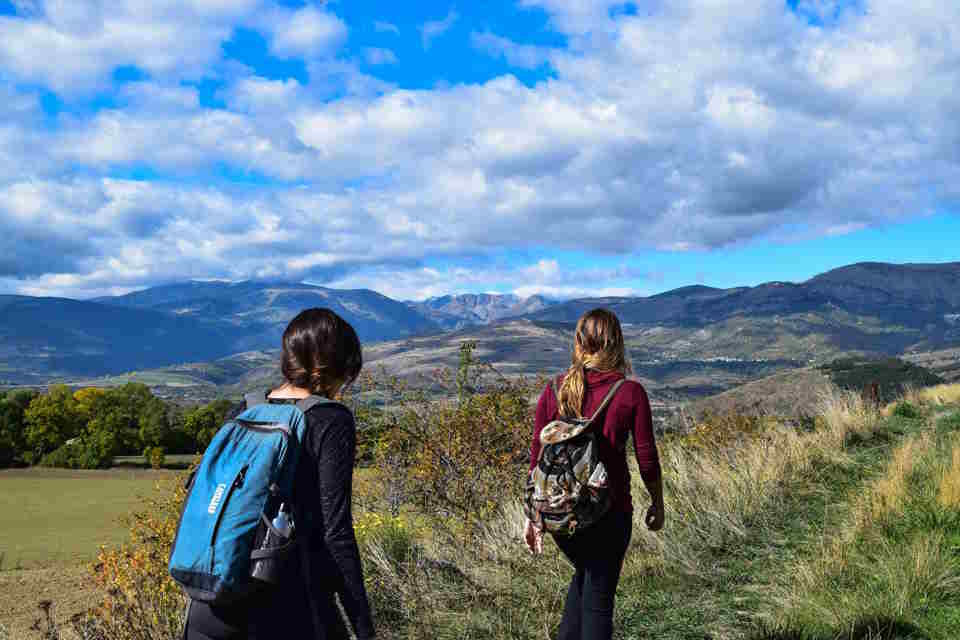If you’re an avid hiker looking to take your adventures to the next level, then scrambling might be just the thing for you. Scrambling is a popular activity in hiking that involves a combination of hiking and climbing, typically on steep or rocky terrain. In this blog post, we’ll explore the definition of scrambling in hiking, the skills required for this activity, safety tips to keep in mind, popular scrambling routes to explore, and the many benefits of incorporating scrambling into your hiking adventures. Whether you’re a beginner or an experienced hiker, there’s something to learn and gain from the world of scrambling.
Definition Of Scrambling In Hiking
Scrambling in hiking is not just your typical walk in the park. It’s an adventurous activity that involves a combination of hiking and climbing techniques. Think of it as hiking on steroids! If you’re looking for an adrenaline rush, scrambling is definitely the way to go. So, what exactly is scrambling?
In simple terms, scrambling is the art of ascending steep and rocky terrains using your hands and feet. It’s like a puzzle where you have to find the best way to navigate through the obstacles nature has thrown your way. Unlike rock climbing, no ropes or harnesses are used in scrambling. You’re relying solely on your own strength, agility, and problem-solving skills.
Scrambling falls somewhere between hiking and rock climbing in terms of difficulty. It requires a higher level of skill and confidence than regular hiking, but it doesn’t require the technical expertise of rock climbing. It’s a perfect activity for those who want to challenge themselves without taking on the full risks and complexities of climbing.
Skills Required for Scrambling
To successfully navigate through a scramble, a certain set of skills is essential. Firstly, you need to have good balance and coordination. You’ll be climbing over rocks, boulders, and uneven surfaces, so being able to keep your footing is crucial.
Secondly, you need to have a good level of physical fitness. Scrambling can be physically demanding, requiring strength, endurance, and flexibility. It’s not just a leisurely stroll; you’ll be exerting yourself as you make your way up and over steep slopes.
Lastly, problem-solving skills are a must. Scrambling often presents unexpected challenges, such as finding the best route or overcoming obstacles. Being able to think on your feet and adapt to changing conditions is key to a successful scramble.
Safety Tips for Scrambling
While scrambling is an exciting and thrilling activity, safety should always be a top priority. Here are some essential tips to keep in mind:
- Plan your route: Before setting off, research the trail and familiarize yourself with the route. Look for any potential hazards or difficult sections.
- Check the weather: Weather conditions can greatly affect the safety and difficulty of a scramble. Make sure to check the forecast before heading out and be prepared for any changes in weather.
- Use appropriate gear: Wear sturdy hiking boots with good grip to ensure traction on slippery surfaces. Consider using a helmet to protect yourself from falling rocks or debris.
- Travel in groups: Scrambling alone is not recommended, especially for beginners. Having a partner or a group provides an extra level of safety and support.
- Know your limits: Don’t push yourself beyond your abilities. Start with easier scrambles and gradually progress to more difficult ones as you gain experience and confidence.
Popular Scrambling Routes
Now that you’re familiar with the definition and skills required for scrambling, you might be wondering where to experience this thrilling activity. Here are some popular scrambling routes around the world:
| Route | Location |
|---|---|
| The Knife Edge | Mount Katahdin, Maine, USA |
| Crib Goch | Snowdonia, Wales |
| Ha Ling Peak | Canmore, Alberta, Canada |
| Striding Edge | Helvellyn, Lake District, England |
| Angel’s Landing | Zion National Park, Utah, USA |
These routes offer a unique mix of challenging terrain and stunning scenery, making them perfect for scrambling enthusiasts.
Benefits of Scrambling in Hiking
Scrambling is not only an exhilarating activity but also has many benefits for both the mind and body. Here are some of the advantages of adding scrambling to your hiking adventures:
- Full-body workout: Scrambling engages muscles throughout your entire body, helping to build strength and improve overall fitness.
- Mental challenge: Navigating through difficult terrain and solving problems along the way can sharpen your cognitive skills and boost mental resilience.
- Connection with nature: Scrambling allows you to explore remote and untouched locations, immersing yourself in the beauty of the natural world.
- Confidence boost: Successfully conquering challenging scrambles can greatly enhance self-confidence and self-belief, both on and off the trails.
- Unforgettable experiences: Scrambling offers unique and memorable adventures that you’ll be reminiscing about for years to come.
So, if you’re up for a thrilling outdoor activity that combines the best of hiking and climbing, give scrambling a try. It’s an adrenaline-fueled adventure that will push your limits and leave you with unforgettable memories.
Skills Required For Scrambling
Scrambling, a popular activity in hiking, requires a certain set of skills that go beyond basic trekking abilities. While hiking involves walking along marked trails and paths, scrambling involves navigating through steep and rocky terrains, often using hands and feet to ascend or descend. It offers a unique and thrilling experience for outdoor enthusiasts who seek an extra challenge in their adventures. However, before embarking on any scrambling expedition, it is crucial to understand the skills required for scrambling.
Physical Fitness: One of the most important skills required for scrambling is physical fitness. Scrambling involves strenuous activities such as climbing, balancing, and jumping. Therefore, it is essential to have a good level of overall fitness, including cardiovascular endurance, muscular strength, and flexibility. Regular exercise, including strength training and cardio workouts, can help prepare your body for the demands of scrambling.
Navigation: Another vital skill required for scrambling is navigation. Unlike regular hiking trails, scrambling routes often lack clear markers or well-defined paths. Therefore, the ability to navigate using a map and compass or GPS device is crucial. Familiarize yourself with reading topographic maps, understanding contour lines, and using compass bearings. Additionally, learning how to assess the terrain and identify potential hazards is essential for a safe scrambling experience.
Problem-Solving: Scrambling involves encountering various obstacles and challenges along the way. Problem-solving skills are essential to overcome these obstacles efficiently and safely. You may encounter situations where you need to find alternative routes, assess the stability of rocks, or make quick decisions to avoid hazardous areas. Developing strong problem-solving skills through practice and experience will greatly enhance your scrambling abilities.
- Physical Fitness
- Navigation
- Problem-Solving
Table: Comparison of Skills Required for Scrambling
| Skills | Description |
|---|---|
| Physical Fitness | The ability to endure strenuous physical activities and maintain balance and coordination. |
| Navigation | The skill to read maps, use a compass, and assess the terrain to navigate through challenging routes. |
| Problem-Solving | The capability to assess obstacles, find alternative routes, and make quick decisions for safe progression. |
Scrambling is an exciting adventure that pushes the boundaries of traditional hiking. It requires a blend of physical fitness, navigation skills, and problem-solving abilities. By honing these skills, you can embark on thrilling scrambling expeditions and experience the joy of conquering nature’s rocky challenges.
Safety Tips For Scrambling
When it comes to scrambling, it’s all fun and games until someone gets hurt. That’s why it’s crucial to prioritize safety while engaging in this exciting hiking activity. Whether you’re a beginner or an experienced scrambler, taking precautionary measures can make a huge difference in your overall experience. In this blog post, we’ll explore some essential safety tips for scrambling that will help you stay safe and enjoy your hiking adventures to the fullest.
1. Always wear the right gear: The first step in ensuring your safety during scrambling is to wear appropriate gear. This includes a sturdy pair of hiking boots with good traction, lightweight clothing suitable for the weather conditions, a helmet to protect your head from falling rocks, and gloves for a better grip.
2. Plan your route and know your limits: Before embarking on any scrambling expedition, it’s crucial to plan your route thoroughly. Research the difficulty level of the scramble and ensure it matches your skill and fitness level. Pushing yourself beyond your limits can result in accidents and injuries.
3. Assess the conditions: Scrambling can be affected by various environmental factors, such as weather conditions and the time of the year. Check the weather forecast before setting out, and avoid scrambling during heavy rain, snowfall, or thunderstorms. Additionally, be cautious of loose rocks or unstable terrain.
Popular Scrambling Routes
When it comes to hiking, sometimes you want to take things up a notch and add a little thrill to your adventure. That’s where scrambling comes in. Scrambling is a type of hiking that involves using your hands and feet to climb over rocks, boulders, and other obstacles. It’s like hiking on steroids! And if you’re looking for some popular scrambling routes to test your skills, you’re in luck. Here are three exhilarating routes that will give you an adrenaline rush like no other.
The Knife Edge, Mount Katahdin, Maine
If you’re up for a challenge and breathtaking views, the Knife Edge trail on Mount Katahdin is the perfect choice. This narrow, exposed ridge will test your balance and nerve as you traverse jagged rocks with sheer drop-offs on either side. But don’t worry, the reward is well worth it. As you navigate this thrilling scramble, you’ll be treated to panoramic vistas of Maine’s wilderness that will leave you in awe.
Angel’s Landing, Zion National Park, Utah
Angel’s Landing is not for the faint of heart. This iconic hike in Zion National Park offers a thrilling mix of scrambling and sheer cliff exposure. The route takes you along a narrow ridge with steep drop-offs on both sides, and at some points, you’ll need to hold onto chains bolted into the rocks for extra safety. Once you reach the summit, you’ll be rewarded with breathtaking views of the red rock canyons below. Just don’t look down!
The Kangaroo, Snowdonia National Park, Wales
For those seeking an adventurous scramble with a touch of history, the Kangaroo route in Snowdonia National Park is the one to conquer. This exhilarating climb takes you up the Crib Goch ridge, where you’ll scramble over knife-edge ridges and climb up exposed rock faces. The route gets its name from a rocky outcrop that resembles a kangaroo when seen from certain angles. With stunning views of the Welsh countryside, including the famous Snowdon peak, this scramble is a must-do for adrenaline junkies.
| Popular Scrambling Routes |
|---|
| The Knife Edge, Mount Katahdin, Maine |
| Angel’s Landing, Zion National Park, Utah |
| The Kangaroo, Snowdonia National Park, Wales |
Benefits Of Scrambling In Hiking
Scrambling in hiking can be an incredibly exhilarating and adventurous activity. While some hikers prefer sticking to the well-defined trails, others seek a bit more excitement by venturing off the beaten path. Scrambling allows hikers to navigate through rocky terrain, using a combination of hiking, climbing, and problem-solving skills. Although it may seem daunting at first, there are numerous benefits to incorporating scrambling into your hiking adventures.
Firstly, scrambling provides a unique sense of achievement and satisfaction. Scaling rocky slopes and conquering challenging obstacles can give you a real adrenaline rush. The feeling of accomplishment that comes from successfully navigating through a scramble is unmatched. Not only does it boost your confidence, but it also adds an element of excitement and thrill to your hiking experience.
Secondly, scrambling enhances your physical fitness. The uneven terrain and steep ascents of scrambling require a higher level of endurance and strength than regular hiking. It engages your core muscles, improves your balance, and enhances your overall fitness levels. The combination of hiking and climbing movements in scrambling provides a full-body workout, making it an excellent way to stay fit and active.
Lastly, scrambling offers breathtaking views and access to unexplored areas of natural beauty. Unlike the popular hiking trails that can become crowded, scrambling routes often lead to less frequented parts of the wilderness. This means you can enjoy the peace and serenity of nature without the distractions of other hikers. Additionally, scrambling routes often take you to higher vantage points, offering stunning panoramic views that are off-limits to regular hikers.
| Benefits of Scrambling in Hiking: |
|---|
| 1. Sense of achievement |
| 2. Improved physical fitness |
| 3. Access to unexplored areas and breathtaking views |








